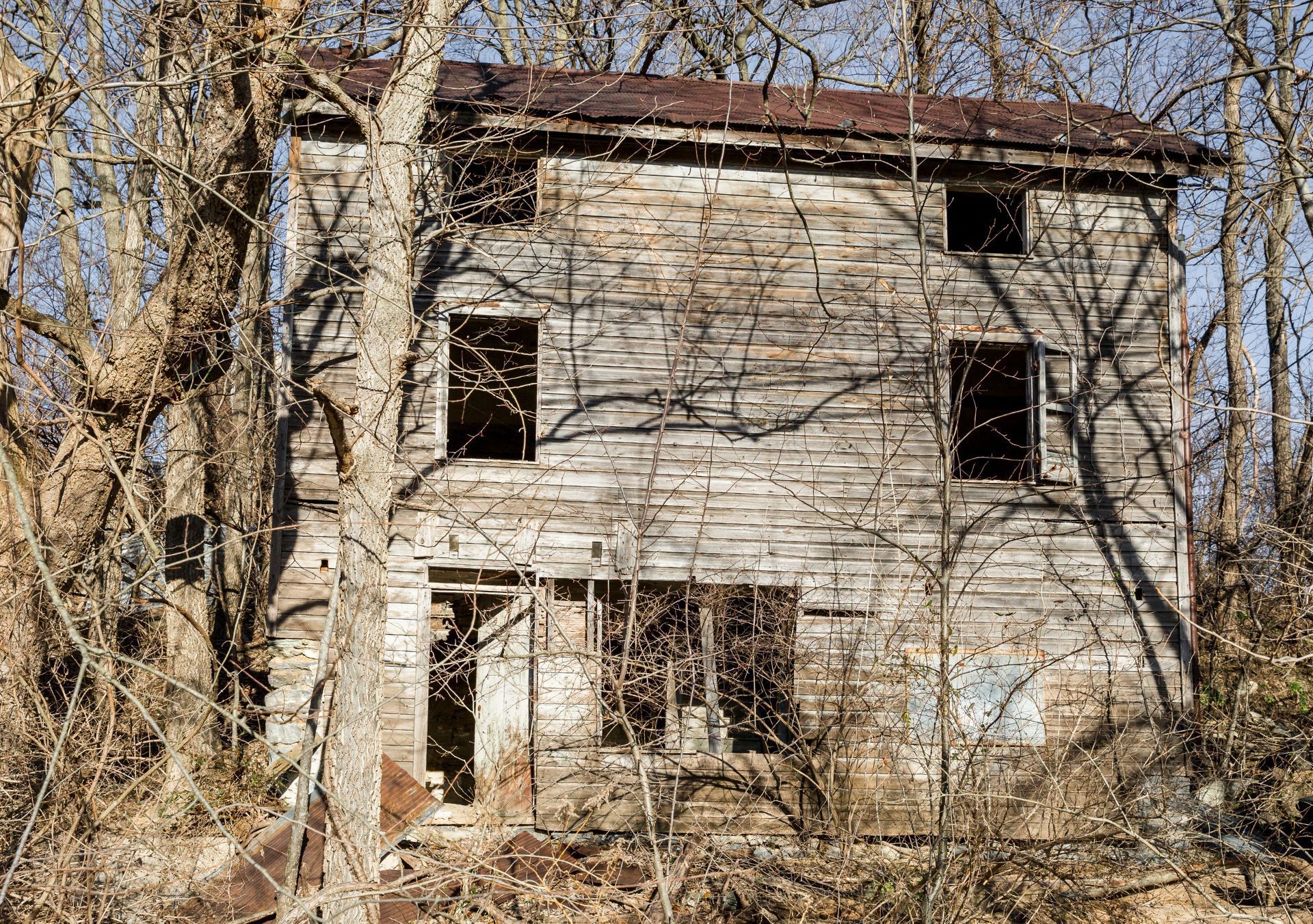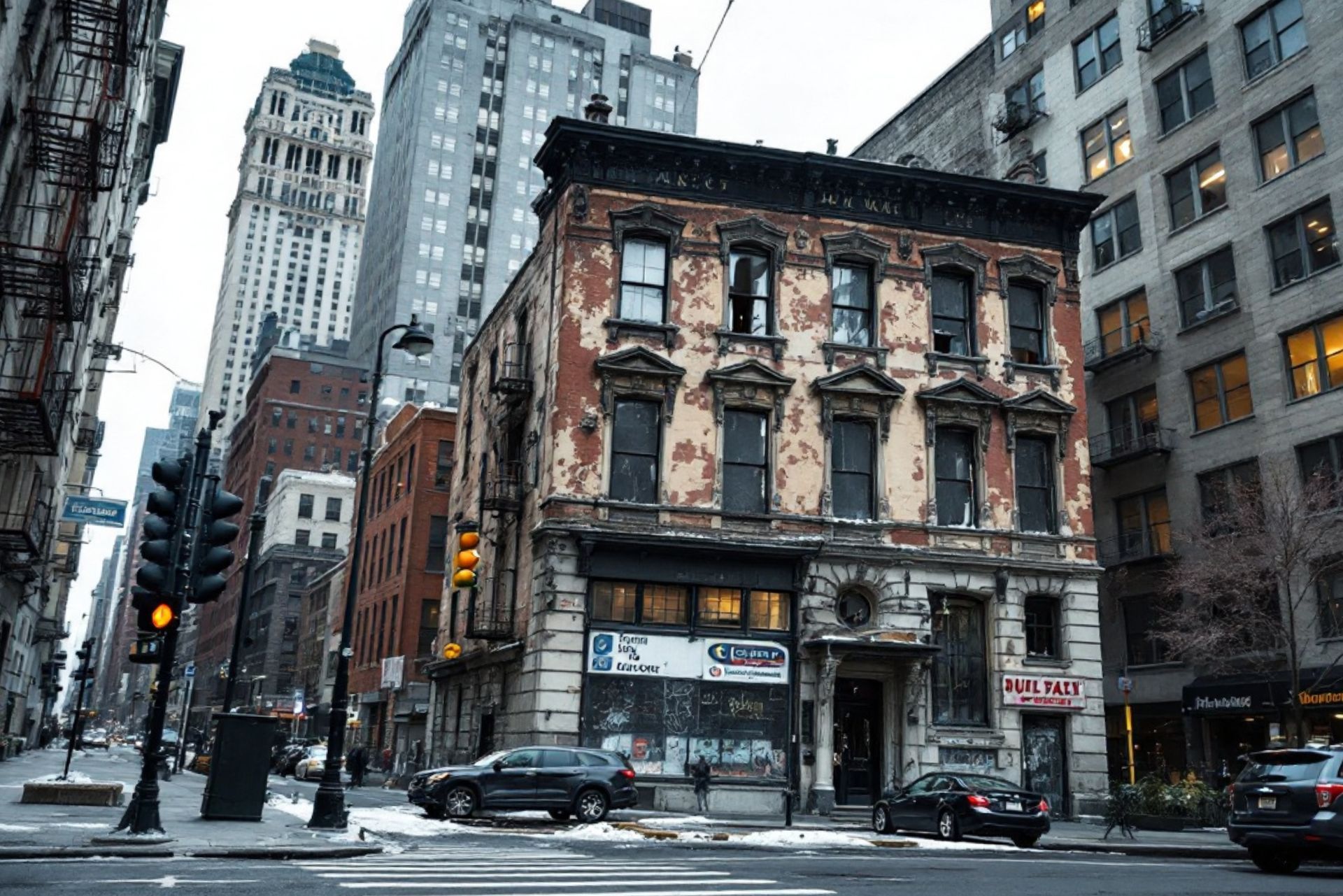New York Vacant Building Insurance
See How We're Different:
or Call Us: 212-425-8150

Most Common Business Policies
Index
Understanding Vacant Building Insurance
The Specifics of New York Vacant Building Insurance
The Process of Getting Vacant Building Insurance in New York
Cost Factors of Vacant Building Insurance in New York
Frequently Asked Questions about Vacant Building Insurance in New York
Conclusion: Protecting Your Investment with Vacant Building Insurance
Contact Us
In a bustling metropolis like New York, vacant buildings can become a significant concern for property owners and investors. Understanding how to protect your investment through vacant building insurance is crucial. This comprehensive guide will walk you through the essentials of vacant building insurance, tailored specifically for New York's unique real estate landscape.
Understanding Vacant Building Insurance
Vacant building insurance is designed specifically for properties that are unoccupied for a certain period. Unlike standard homeowners or commercial insurance, vacant building insurance provides more tailored coverage that accounts for the specific risks associated with vacancy.
Definition of Vacant Building Insurance
Vacant building insurance is a type of insurance policy that protects property owners from financial losses while their building is unoccupied. This insurance covers risks such as vandalism, theft, and damage that may not be included in standard homeowner policies. It's important for property owners to recognize the differences between regular insurance and vacant building insurance, as their needs will vary significantly during periods of vacancy.
Importance of Vacant Building Insurance
The importance of vacant building insurance cannot be overstated. Property owners are at a higher risk of encountering various issues when a building is unoccupied. For instance, burst pipes, fire hazards, or unauthorized entry can lead to significant losses. Vacant buildings are often targets for vandalism and squatters, further complicating the owner's responsibility and liability. Having a vacancy-specific policy ensures that these unique risks are addressed.
Moreover, many insurance companies may impose restrictions or even deny claims on standard policies if they discover that a property has been vacant for an extended period without proper notification. This can leave property owners vulnerable to unexpected financial burdens that arise from damage or liability claims. By investing in vacant building insurance, owners not only protect their investment but also maintain peace of mind knowing that they are covered against the specific threats that come with an unoccupied property.
Additionally, vacant building insurance can also facilitate a smoother transition when a property is being prepared for sale or lease. Potential buyers or tenants may feel more secure knowing that the property has been insured against risks during its vacancy. This can enhance the marketability of the property and may even lead to better offers, as buyers appreciate the reduced risk associated with an insured vacant building. Understanding the nuances of this specialized insurance can ultimately empower property owners to make informed decisions about their investments.

The Specifics of New York Vacant Building Insurance
New York State has its own set of guidelines and considerations when it comes to vacant building insurance. Understanding these nuances can help property owners make informed decisions.
New York State Laws and Regulations
New York’s regulations regarding vacant buildings are stringent. The state has defined legal responsibilities for property owners to prevent issues such as blight and to ensure public safety. Owners of vacant properties must comply with local ordinances, including regular inspections and maintenance of the premises. Failure to adhere to these laws can result in fines and other penalties, making it essential to have adequate insurance coverage to protect against potential liabilities. Additionally, municipalities may have their own specific requirements, which can vary widely across the state. Some areas may mandate that owners secure their properties to deter vandalism or unauthorized access, while others may require periodic reporting to local authorities regarding the status of the building.
Typical Coverage and Exclusions
Typical coverage under vacant building insurance includes protection against property damage, liability claims, and other risks associated with vacancy. However, it's also crucial to understand the exclusions that may apply. Most policies do not cover certain natural disasters or specific types of water damage unless additional riders are acquired. Therefore, a thorough review of the policy details is essential. Furthermore, it is important for property owners to consider the potential impact of crime rates in their area, as vacant buildings can become targets for theft or vandalism. Insurers may offer specific endorsements to cover these risks, but they often come at an additional cost. Property owners should also be aware that some insurers may impose stricter terms or higher premiums based on the location and condition of the vacant building, making it vital to shop around and compare different policies tailored to their unique circumstances.
The Process of Getting Vacant Building Insurance in New York
Acquiring vacant building insurance involves several steps. Property owners should be well-versed in this process to ensure they find the right policy for their needs.
Eligibility Criteria
Insurance companies usually have specific eligibility criteria for vacant building insurance. Factors that may influence eligibility include the condition of the property, the length of time it has been vacant, and the owner’s history of insurance claims. Some insurers may require an inspection before issuing a policy, assessing potential risks associated with the property. Additionally, the location of the building can play a significant role; properties in areas prone to natural disasters or high crime rates may face stricter requirements or higher premiums.
Steps to Apply for Insurance
To apply for vacant building insurance in New York, follow these steps:
- Research and compare different insurance providers.
- Gather relevant property details, including its size, location, and condition.
- Request quotes from multiple insurers to find the best coverage options and rates.
- Review the policy details thoroughly before making a purchase.
- Finalize the application process, providing any needed documentation to the insurer.
In addition to these steps, it’s crucial to understand the various types of coverage available. Some policies may offer protection against vandalism, theft, or liability claims, which can be particularly important for vacant properties that may attract unwanted attention. Furthermore, property owners should consider the duration of the vacancy and whether they plan to renovate or sell the building, as these factors can influence the type of coverage needed. Engaging with an insurance broker who specializes in vacant property can also provide valuable insights and help navigate the complexities of different policies.
Once the policy is secured, ongoing maintenance of the property is essential. Insurers often require that vacant buildings are regularly checked and maintained to minimize risks. This includes ensuring that utilities are properly managed, securing the premises against unauthorized access, and addressing any potential hazards that could lead to claims. Keeping thorough records of all maintenance and inspections can not only help in the event of a claim but also demonstrate to insurers that the property is being responsibly managed, potentially leading to better rates in the future.
Cost Factors of Vacant Building Insurance in New York
Understanding the cost factors associated with vacant building insurance is vital for budget-conscious property owners. The premiums can vary based on several criteria, and being informed can help you make better financial decisions regarding your property. In a bustling metropolis like New York, where real estate dynamics shift rapidly, having a clear grasp of these elements can mean the difference between a manageable expense and a financial burden.
Factors Influencing the Insurance Premium
Several factors can influence the premium rates for vacant building insurance, including:
- Location of the property – Areas with higher crime rates may have higher premiums.
- Condition of the building – Properties in excellent condition may qualify for lower premiums.
- Duration of vacancy – Longer periods of vacancy could increase the risk, leading to higher costs.
- Previous insurance claims – A history of claims can increase premiums.
In addition to these factors, the type of construction materials used in the building can also play a significant role. For instance, buildings made of fire-resistant materials may attract lower premiums, as they present a reduced risk of fire damage. Furthermore, the presence of safety features such as alarms, fire suppression systems, and security cameras can lead to discounts, as they mitigate potential risks associated with vacant properties. Understanding these nuances can empower property owners to make informed decisions about renovations and upgrades that could ultimately lower their insurance costs.
Ways to Lower Your Insurance Costs
There are several strategies property owners can employ to lower their insurance costs:
- Conduct regular maintenance on the property to minimize risk.
- Secure the building appropriately to deter vandalism and unauthorized use.
- Bundle insurance policies for a multi-policy discount.
- Shop around for quotes to find the best rates.
Moreover, engaging with a knowledgeable insurance broker can provide insights into specific coverage options that might be more cost-effective for your situation. They can help identify any potential discounts you may not be aware of, such as those for properties that are part of a homeowners association or for those that have undergone recent renovations. Additionally, some insurance companies offer incentives for property owners who take proactive measures, such as enrolling in risk management programs or attending workshops on property maintenance. By leveraging these resources, owners can not only save money but also enhance the overall safety and value of their vacant properties.

Frequently Asked Questions about Vacant Building Insurance in New York
Many property owners have questions about vacant building insurance. Here are some of the most common inquiries.
Common Misconceptions
One of the biggest misconceptions about vacant building insurance is that standard homeowners insurance is sufficient. Many policyholders are shocked to learn that their standard insurance does not cover loss from vacancy. Another misconception is that all vacant building policies are the same; in reality, coverage can vary significantly from one insurer to another. For instance, some policies may include coverage for vandalism or theft, while others may exclude these risks entirely. Understanding these nuances is crucial for property owners who want to ensure they are adequately protected.
Expert Advice for Property Owners
Experts recommend that property owners do thorough research before settling on a vacant building insurance policy. Consulting with an experienced insurance agent can provide valuable insights into coverage options and help identify potential risks that the owner might not have considered. Additionally, property owners should assess the specific circumstances surrounding their vacant buildings, such as location, condition, and the length of time the property is expected to remain unoccupied. Factors like neighborhood crime rates or the building's maintenance history can significantly impact insurance premiums and coverage needs. By taking these elements into account, owners can tailor their insurance policies to better fit their unique situations, ensuring comprehensive protection against unforeseen events.
Furthermore, it’s important for property owners to stay informed about local regulations and requirements regarding vacant properties. In New York, certain municipalities may have specific ordinances that require property owners to take additional precautions or even register their vacant buildings. Failing to comply with these regulations can lead to fines or complications with insurance claims. Therefore, being proactive in understanding both insurance and local laws is essential for safeguarding investments and maintaining peace of mind during the vacancy period.
Conclusion: Protecting Your Investment with Vacant Building Insurance
In conclusion, securing vacant building insurance is an essential step for property owners in New York. This insurance protects against various risks associated with unoccupied properties and provides peace of mind during periods of vacancy.
Recap of Key Points
Property owners should remember that vacant building insurance is tailored to cover the unique risks linked to vacancies. Understanding state laws, coverage specifics, and the application process will empower owners to make informed decisions that best protect their investments.
Final Thoughts on Vacant Building Insurance in New York
Vacant building insurance is not just an additional cost; it's a necessary investment in safeguarding a property. As such, property owners must recognize its value and actively seek the best options available. Protecting your investment should always be a top priority, and securing the right insurance is a critical component of that effort.
